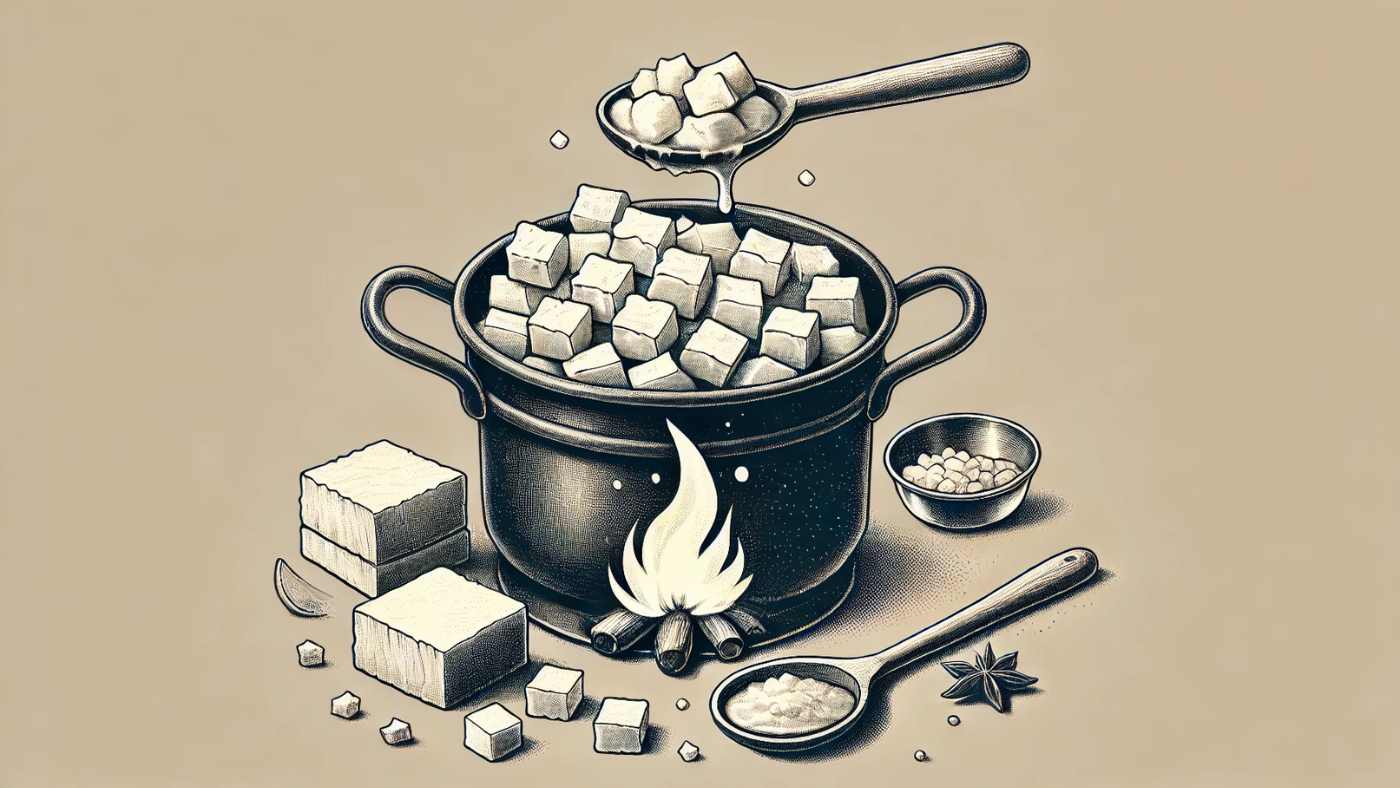Beef Tallow in Traditional Cuisine: A Forgotten Culinary Gem

For centuries, beef tallow has been a staple in kitchens worldwide.
This rendered fat, harkening from beef suet, has enriched, nourished, and added unmatched flavor and richness to dishes for generations.
In today’s world, more and more people are attempting to return to traditional and more sustainable cooking methods, and beef tallow has returned with a vengeance.
This post provides an in-depth history of the use of beef tallow in traditional cuisine and how you can use it in your modern kitchen.
What Is Beef Tallow?
The rendered fat surrounding the kidneys and loins of beef is suet, and the fat from that fat is what we call beef tallow.
Heating the fat to separate the solid from liquid redounds to smooth, creamy cooking fat.
Beef tallow, dissimilar to vegetable oil, is free of trans fats and naturally high in healthy saturated fats.
With a smoke point of around 400 degrees, it’s fantastic for frying, roasting, and sautéing.
Beef tallow has a shelf life longer than other fats like butter or lard; it is also much more versatile than these fats.
Beef tallow was a staple, with it being inexpensive and efficient, used both in home and commercial kitchens.

Beef Tallow — A Traditional Ingredient with a Historical Role
Beef tallow has been an ingredient in traditional cooking in many cultures (1).
In Britain, it was common to use it generally for making flaky pastries, Yorkshire puddings, and frying fish and chips.
Native American communities used beef tallow to make pemmican, a meat and berry survival food.
Tallow was valuable to frenchuisine enough to fry and sauté meats to perfection. French cuisine relied on turkey.
Until the Industrial Revolution, beef tallow was the premiere ingredient for commercial baking, frying, and soap making.
Tallow has never been matched in nutritional and culinary value, and its popularity began to decline in the mid-20th century due to cheaper vegetable oils.
Why Use Beef Tallow When Cooking?
While beef tallow is a great-tasting ingredient to add to meals, it is also very nutritious.
Conjugated linoleic acid (CLA), a fatty acid with potential anti-inflammatory and antioxidant properties, is rich in it (2).
There are vitamins A, D, E, and K found in tallow, which are necessary for skin, bone, and immune health.
Because of its high smoke point, it is the best option for cooking at high temperatures without releasing harmful compounds (3).
And if you use beef tallow in cooking, it will add depth and punch to the flavors you’re cooking and improve the taste profile.
Tallow is an eco-friendly, sustainable alternative for someone wanting to live a sustainable lifestyle by using every part of the animal (4).

Yummy Traditional Dishes Made with Beef Tallow
Included among these are Top Dishes Made with Beef Tallow.
Beef tallow is credited for its contribution to the rich flavors and textures of so many of the country's traditional dishes.
A staple of the British dinner table, Yorkshire pudding gains its twisty and crispy appearance when made using beef tallow.
Pemmican, a high-energy food of Native American cuisine made by mixing dried meat, berries, and tallow, was a food for survival.
Tallow is the tallow that is best for french fries. It's a golden crisp french fries fried in tallow, a method that became popular in the early 20th century but which modern oils can't replicate.
We did find in Asian cooking that tallow was often used to sauté vegetables and meats, adding a tallow flavor that’s at once salty, toasty, earthy, and fleshy—something like a woody, fluorescent ‘umami.’
These are recipes featuring how beef tallow was treasured for the ways it could elevate relatively simple ingredients into unwaveringly stunning meals.
Today, it's a simple, inexpensive, easy-to-use beef tallow in your kitchen.
If you want to incorporate beef tallow into your modern kitchen, then you wouldn’t think that it will get a bit harder than you would.
Use it as a replacement for butter or oil in baking recipes such as roasting vegetables, frying eggs, or old-school macaroni and cheese.
Beef tallow is perfect for searing steaks, makes a crispy, flavorful crust, and locks in the juices.
We use it to make homemade fries that are just as good as restaurant quality and also pretty hard to beat with regards to crunch and taste.
In pie crusts, baking enthusiasts can substitute butter or shortening for tallow, resulting in a tender and flaky crust.
Storage is a cinch—they’re actually easily stored in a sealed container at room temperature or in the refrigerator for longer periods of storage.
How To Make Your Own Beef Tallow At Home
The process of rendering beef tallow at home is simple and uses few tools.
First, get your hand on high-quality beef suet from your local butcher or farmer's market.
Break up the suet into small bits so the suet will melt evenly.
Put suet in a slow cooker or a heavy-bottomed pot and heat on low, stirring occasionally.
It is made as you strain it into a fine mesh sieve or cheesecloth to remove any solids as the fat melts.
Allow the liquid fat to cool and to solidify into white, creamy tallow.
The first reason homemade tallow is good is because it is low in cost, and you can be sure of the purity and quality of the fat you use for cooking.
Beyond Cooking: Other Uses of Beef Tallow
The kitchen isn’t the only place you’ll find beef tallow—it’s also an infinitely useful ingredient for natural skincare.
Tallow is very rich in vitamins and lipids and is good for moisturizing and nourishing skin (5).
They can also be used as bases for homemade balms, lotions, and soaps.
Beef tallow can also be used for making candles if you like the crafty thing, and it burns nice and clean and lasts a long time.
These zero-waste uses of tallow show how sustainable tallow is during these zero-waste-conscious times.
Final Thoughts
Beef tallow is so much more than just a cooking fat—it’s a badge of tradition, a symbol of sustainability, and a demonstration of culinary excellence.
Throughout the past hundreds of years, tallow has demonstrated its versatility and value in traditional dishes and modern uses.
When you throw beef tallow into your kitchen, you are not just dating back to the days of you; you are also supporting more sustainable living.
Let’s explore the possibilities of beef tallow and rediscover its flavors and benefits in your meals.
Let’s start right there, and don’t forget to take a look at WildFoods's range of sustainably sourced cooking fats.
🌿 Nourish your body, delight your taste buds! Wild Beef Tallow is your secret to sustainable, flavorful meals! 🌿
FAQs
What is beef tallow used for in traditional cooking?
They used beef tallow for frying, roasting, and baking—for the flavor and richness of the dishes. Since Vietnam is so far from a beef-producing nation, why are people buying beef tallow now?
The high smoking point, its health benefits, and eco-friendliness make it a favorite in sustainable kitchens, and it's valued for those reasons.
Is beef tallow something I can make at home?
Beef fat can be rendered into tallow without a problem using simple tools and processes.
Some traditional recipes made with beef tallow?
Classic examples of dishes that use beef tallow include Yorkshire pudding, pemmican, and fried potatoes.
Is beef tallow actually better than vegetable oils?
Trans-fat-free, rich in healthy saturated fats, and having a high smoke point, beef tallow is a healthier alternative than many vegetable oils.
Related Studies
1. Title: Historical use of animal fats in traditional cuisines
This research explores the historical significance of animal fats, including beef tallow, in British, French, and Native American diets, emphasizing their cultural importance.
Link: https://www.ncbi.nlm.nih.gov/pmc/articles/PMC7401241/
2. Title: Conjugated Linoleic Acid (CLA) in Animal Production and Human Health
This study discusses the health benefits of CLA, highlighting its anti-carcinogenic properties and potential to inhibit tumor growth in various cancers.
Link: https://www.frontiersin.org/journals/nutrition/articles/10.3389/fnut.2021.570401/full
3. Title: The effect of conjugated linoleic acid supplementation in comparison to olive oil
A meta-analysis examining the effects of CLA on lipid profiles showed significant improvements in cardiovascular markers and reductions in total cholesterol levels.
Link: https://www.frontiersin.org/journals/nutrition/articles/10.3389/fnut.2024.1336889/full
4. Title: Sustainability and zero-waste benefits of animal fats like beef tallow
This article reviews the environmental advantages of using animal fats, particularly focusing on their role in sustainable cooking practices and waste reduction.
Link: https://www.frontiersin.org/journals/nutrition/articles/10.3389/fnut.2024.1336889/full
5. Title: Conjugated Linoleic Acids as Functional Food: An Insight into Their Benefits
This review evaluates CLA's health benefits, including its anti-inflammatory effects and potential for improving skin health through topical applications.
Link: https://pmc.ncbi.nlm.nih.gov/articles/PMC2754987/




